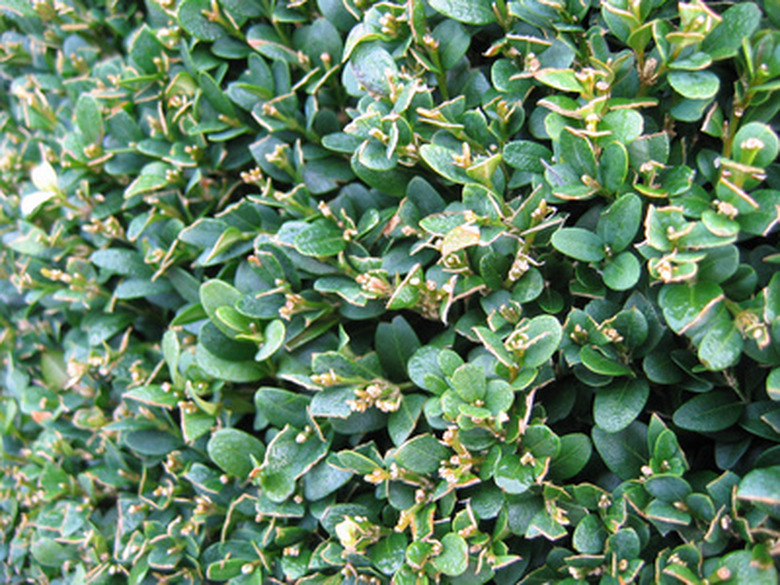Winter Gem Boxwood Shrub
Forming a dense, rounded shrub, the Winter Gem boxwood is regarded for its exceptional tolerance to winter cold. Being a broadleaf evergreen, it retains its small leaves across winter, often blushing with bronze tones atop the usual green color. In spring this boxwood variety sprouts bright, yellow-green stems and leaves that contrast older foliage.
Origins
A type of littleleaf boxwood (Buxus microphylla), native to eastern Asia, the cultivated variety (cultivar) 'Winter Gem' has a muddy, confusing history and origin. The classification of boxwood cultivars is contradictory with botanical experts have differing opinions on which cultivar belongs to which species or variety or hybrid. For example, literature lists 'Winter Gem' as both var. koreana or var. japonica, meaning it was developed from plants either native to the Korean Peninsula or Japan, respectively. Moreover, some cite that 'Winter Gem' is derived from a mutation from a hybrid boxwood.
- Forming a dense, rounded shrub, the Winter Gem boxwood is regarded for its exceptional tolerance to winter cold.
- A type of littleleaf boxwood (Buxus microphylla), native to eastern Asia, the cultivated variety (cultivar) 'Winter Gem' has a muddy, confusing history and origin.
Habit
The Winter Gem littleleaf boxwood grows into a densely branched and leaved shrub that is rounded to mounded in habit. At maturity it is 3 to 5 feet tall and wide.
Foliage
All boxwood plants have small oval leaves that are leathery and evergreen, persisting across winter's cold. The littleleaf boxwood's leaves are slightly smaller and a bit more lance-shaped than just an oval. Selection 'Winter Gem' has new springtime foliage that is bright and yellow-green before maturing to a medium to deep green by midsummer.
In winter the foliage may lightly bronze in color, adding to its ornamental value. Year-round, the smell emitted by the foliage is strongly musk-scented or almost skunk-like. Many people find the scent offensive.
- The Winter Gem littleleaf boxwood grows into a densely branched and leaved shrub that is rounded to mounded in habit.
- All boxwood plants have small oval leaves that are leathery and evergreen, persisting across winter's cold.
Flower
Usually not seen, but certainly noticed by honeybees, boxwoods produce many tiny yellow-green flowers on their branches in mid-spring. Up close, they are star-shaped and located at the base of leaves. They smell like white chocolate, or honey-scented tansy.
Uses
Winter Gem boxwood tolerates winter cold better than many other cultivars, and thus makes it a good choice for a hedge or topiary in USDA Hardiness Zones 4 and 5. However, wind in winter readily dries out foliage on boxwood plants; thus, this cultivar should be planted in a partially shaded location where warm sun and cold, strong winds do not combine over the winter months.
